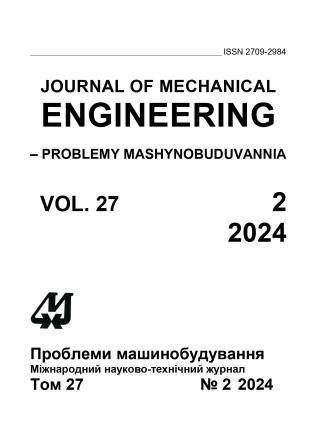Toolpath Generation on 3-Axes Milling Using Constant Volume Method
Abstract
A new simple method to generate toolpaths when machining based on the fixed base of the residual metal portion left after each longitudinal (forward step) and transverse cutting step (stepover) is presented in this paper. After each longitudinal and transverse cutting step, there will be an unprocessed metal portion, which has the form of a cone with a quadrilateral base, and the lateral edges are curves created by the intersection of the sphere with the diameter of the toolpath. The height of this cone, Sc, is called the scallop height, and its projection on a cutting plane is called the cusp. However, the entire volume of this unprocessed metal portion was examined in the paper. From there, it was proposed to adjust the toolpath in such a way that the volume of this portion remains constant in each step of the tool, resulting in ensured machining quality on the entire surface. Unlike the previous studies where toolpath is generated using iso-scallop, iso-parametric, or iso-planar methods, a new method based on calculating the volume of uncut metal after each step of the toolpath horizontally and vertically is offered in this paper. This method is called constant volume. Compared to existing methods, this approach is superior because it makes possible to calculate the volume of remaining metal, thereby ensuring more uniform surface quality and more efficient toolpath. To ensure the correctness of the proposed method, a script used to generate a toolpath with a simple surface was implemented by Matlab2010a. The toolpath generated by the proposed method was compared with toolpath generated by the traditional method already available in CAD/CAM software. The results showed that the proposed method had good accuracy and fast toolpath generation time. This method can be extended to complex surfaces and is an option for application in CAD/CAM software as well as providing another toolpath generation solution for mechanical machining in general.
Downloads
Published
Issue
Section
License
Copyright (c) 2024 Van-Quy Hoang

This work is licensed under a Creative Commons Attribution-NoDerivatives 4.0 International License.
All authors agree with the following conditions:
- The authors reserve the right to claim authorship of their work and transfer to the journal the right of first publication of the work under the license agreement (the agreement).
- Authors have a right to conclude independently additional agreement on non-exclusive spreading the work in the form in which it was published by the jpurnal (for example, to place the work in institution repository or to publish as a part of a monograph), providing a link to the first publication of the work in this journal.
- Journal policy allows authors to place the manuscript in the Internet (for example, in the institution repository or on a personal web sites) both before its submission to the editorial board and during its editorial processing, as this ensures the productive scientific discussion and impact positively on the efficiency and dynamics of citation of published work (see The Effect of Open Access).

